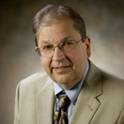Objective
To determine the financial impact of a nursing home practice on an academic medical center. Design
Retrospective cohort design. Setting
Middle-sized Midwestern community with fee-for-service Medicare population. Sample
One hundred seventy-six nursing home residents followed by faculty and residents of a medical school department of family and community medicine. Measurements
Billings and collections for professional and hospital services delivered by the academic medical center during fiscal year 1998. Results
One hundred forty-four patient-years of service resulted in over $1 million in billed charges. For every $1 billed by family medicine, consulting physicians billed $2 and the hospital billed $10. This amounted to over $4000 per patient per year in reimbursement. This practice generated a wide variety of clinical problems (37 different diagnosis–related groups (DRGs) for the 61 admissions to the hospital). Conclusions
There is a significant downstream financial effect of a nursing home practice on an academic health center. For this and other reasons, this practice may be worthy of institutional support.
Available at: http://works.bepress.com/larry_lawhorne/20/
